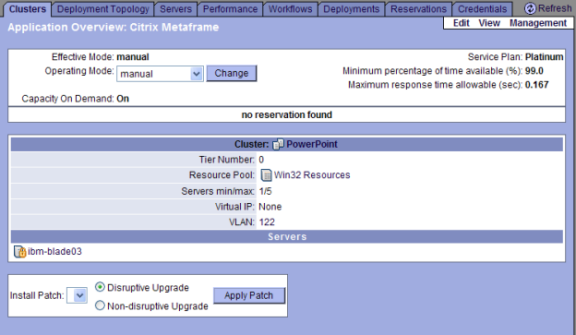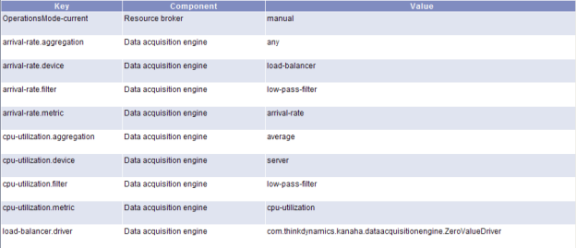| Tool Mentor: TIO - Schedule and Adjust Workload |
 |
|
| Related Elements |
|---|
ContextTool mentors explain how a tool can perform tasks, which are part of ITUP processes and activities. The tasks are listed as Related Elements in the Relationships section. You can see the details of how processes and activities are supported by this tool mentor, by clicking the links next to the icons: DetailsThe IBM® Tivoli® Intelligent Orchestrator product allows administrators to model and manage applications through the definition of service levels that are associated with their application environment. Before Tivoli Intelligent Orchestrator can successfully manage workload, a series of definitions must be put in place. These include two elements that are highly critical to successful workload management. One of those definitions is the modeling of the application environment. In order to manage an application properly, Tivoli Intelligent Orchestrator requires specific definition metadata with respect to the software layout. Examples of required informational metadata includes:
As soon as an application has been modeled, a "cluster or group of resources (servers) is defined as belonging to the application. The cluster level also carries a number of attributes that define how we collect utilization metrics (using SNMP, JMX, or another method) and how we react to those metrics. When a resource is determined to be threatened by reaching (or exceeding) the application's defined service level, a workflow is enacted to resolve the potential service level breach. A workflow is a series of sequential events that are used to automate a specific task. The workflow, which is called when a service level is in threat of breach, is a customizable parameter and varies between environments. The workflows typically mirror the corporate best practices regimen that is specific to the data center within which it is implemented. Each workflow operation can be designed with pre-installation and post-installation automations that properly prepare the environment for upcoming change.
In addition to measuring raw resources to gather workload statistics, Tivoli Intelligent Orchestrator will also measure key indicators from network infrastructure that is determined to be critical to the application. In many cases metrics such as "Load Balancer Arrival Rate will also be factored into utilization metrics and resource decisions. The arrival rate metric describes the rate at which incoming information is arriving at the load balancer and the delta of change (either increased or decreased) in utilization levels between them over a specific period of time. Measuring this type of data creates the ability to use these metrics for trending analysis and historical performance indicators. Using this data allows identification of future trends that can be reacted to before they occur. For More InformationFor more information about this tool, click on the link for this tool at the top of this page. |
©Copyright IBM Corp. 2005, 2008. All Rights Reserved. |

